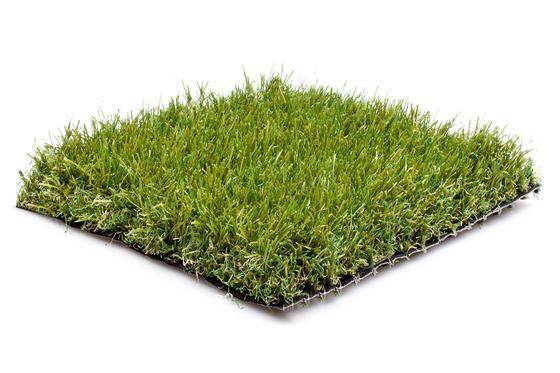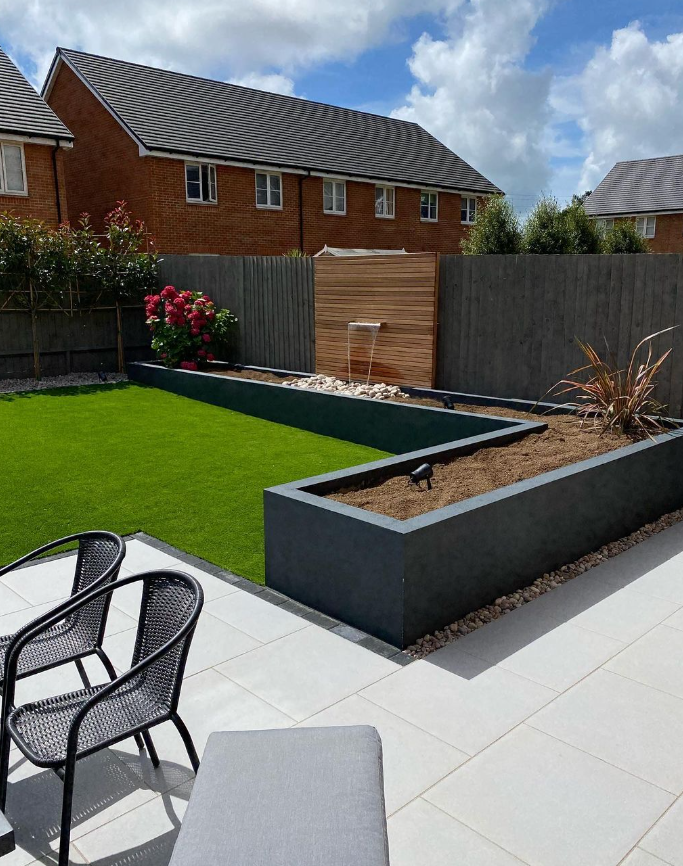
10 Ways To Create The Perfect Garden Borders
Borders aren’t just there to stop plants from spilling over. They're what quietly give your garden a sense of order, depth and rhythm. The right border can lead the eye, break up open space, and, in a way, frame your planting like a well-thought-out painting.
Whether you're all about a structured flower bed or you prefer a looser, more natural layout, getting your garden borders right is usually where the magic starts. It’s not only about what you plant, but how you shape and edge it – and how low you want your maintenance to be after that first flush of energy wears off.
Choose the Right Border Style
So, before you start digging or buying plants, ask yourself – what sort of garden are you hoping to create? For a neat and structured feel, straight lines and symmetrical shapes tend to work well. That’s more of a formal look, the kind you might find in a modern garden design.
If your space leans a little wilder or you like it to feel relaxed, curved edges and flowing shapes might suit you better. These help soften the space and feel less forced. The shape of your garden borders really does steer the mood of the whole space, so it’s worth sketching things out before you commit to a single spade of soil.
Use a Variety of Plants

Layering makes borders feel fuller – low plants at the front, tall ones at the back, with something in the middle to stop things looking flat. Mix perennials, evergreens, and seasonal flowers for year-round interest.
Texture matters too – pairing feathery grasses with glossy leaves or bold blooms adds depth. Try staggering bloom times so there’s always colour, not just a spring burst. A well-planted flower bed structure doesn’t need to be complicated – just balanced enough to feel natural, not chaotic.
Incorporate Different Heights
Borders that sit all at one level often feel, well, a bit flat. That’s why using height, even just a little – can make such a difference. Small shrubs add body, while climbers bring life upwards, especially near fences or trellises.
Ground-hugging bedding plants fill gaps and help tie everything together. By layering vertically, you get that tiered effect that feels lush without crowding the space. This kind of setup usually gives garden borders a more natural flow and stops them from feeling too manicured or repetitive.
Balance Colour and Texture

Colour grabs attention, but texture holds it. If your garden borders feel flat, try mixing fine, airy foliage with bold, structured leaves. A mix of evergreens and seasonal blooms keeps things interesting throughout the year.
It’s not just about the flowers – contrast in leaf shape, height, and texture can bring quiet drama. Even subtle shifts make a difference. The best decorative garden edging often starts with thoughtful planting choices, not just the materials that hold them in place.
Define Borders with Edging Materials
Edging shapes the look of your garden and keeps everything in check. You’ve got plenty of edging solutions to explore – timber for a softer feel, metal for sleek lines, or brick for that neat, classic finish.
But if you want something that stays tidy with barely any upkeep, artificial grass borders are well worth considering. They frame your beds cleanly and work beautifully in modern garden design. Check out our artificial grass collection – simple, smart, and no frayed edges to worry about.
Include Low-Maintenance Ground Cover

If pulling weeds every weekend isn’t your thing, ground cover can be your best friend. Low-growing plants, bark chips, gravel, or even mulch help suppress weeds and hold in moisture, which saves time and water.
Turf might be an option too, especially the kind that’s fuss-free and slow-growing. These choices fit right into low-maintenance garden ideas that still look polished. It’s all about covering exposed soil so your borders don’t end up looking patchy or overrun by whatever seeds blow in next.
Plan for Year-Round Maintenance
Borders don’t just take care of themselves – but with a bit of planning, they won’t ask too much of you either. Cut back spent growth in autumn, mulch in spring, and give everything a light feed as the weather warms up.
Choose plants that don’t need constant fuss, and group them by needs – shade lovers together, sun lovers in one spot – to avoid trial and error. That way, your garden borders stay looking good through all seasons without turning into a part-time job.
Create Curved Lines for Natural Flow

Straight borders can look sharp, but sometimes they cut the space up a bit too much. Adding a gentle curve to your edging can make a small garden feel wider, or a large one feel more inviting.
Curves help the eye move naturally from one part of the garden to another, and they soften the transition between hard materials and planting. This trick works especially well when paired with artificial grass borders, where the contrast between structured edge and flowing shape adds a bit of drama without looking overdone.
Integrate Decorative Features
Borders don’t have to stop at plants. Adding decorative garden edging, solar lights, or small stone features can give your layout that extra bit of character. Even a few sculptural pieces or a tucked-away bench can break things up visually and create little moments of surprise.
The trick is not to overdo it. One or two features, spaced out and surrounded by simple planting, usually make more of an impact than packing the whole border with bits and bobs. It’s about balance, not clutter.
Ensure Good Soil Preparation

A good border starts below the surface. It might sound dull, but sorting the soil out before planting is one of the easiest ways to avoid problems later. Dig through some compost or well-rotted manure, and check for drainage – waterlogged borders rarely thrive.
Healthy soil means stronger plants, fewer weeds, and a structure that lasts. It’s the quiet foundation that lets your flower bed structure do the heavy lifting above ground. No glossy edging or fancy planting will cover poor soil for long – so it’s worth a little effort upfront.
So, garden borders aren’t just about separating the flowers from the grass. They shape the whole space, guide your eye, and – if done well – make the garden feel thoughtfully put together. Whether you're after decorative garden edging or clean artificial grass borders, the right choices will save you time and effort down the line. A little planning upfront tends to lead to a garden that looks great, season after season.


